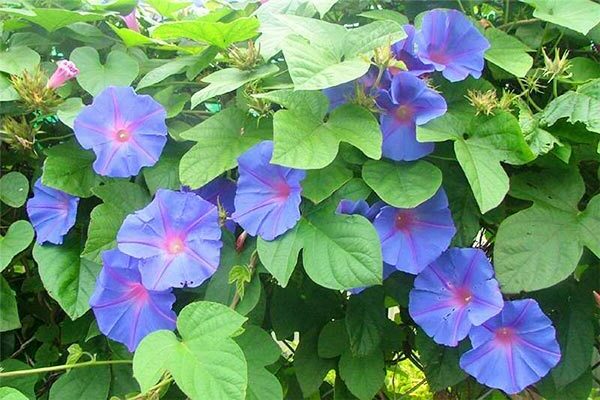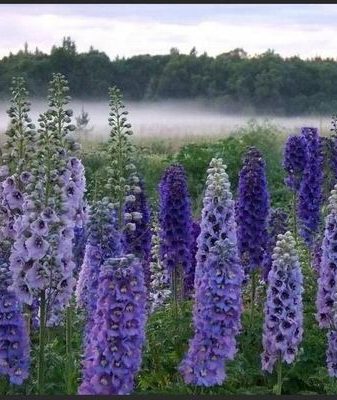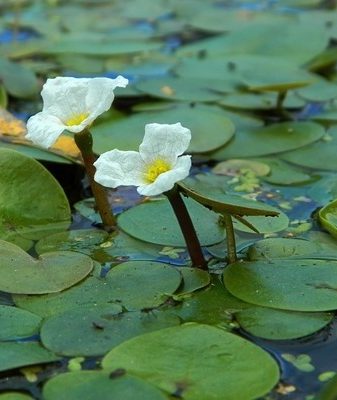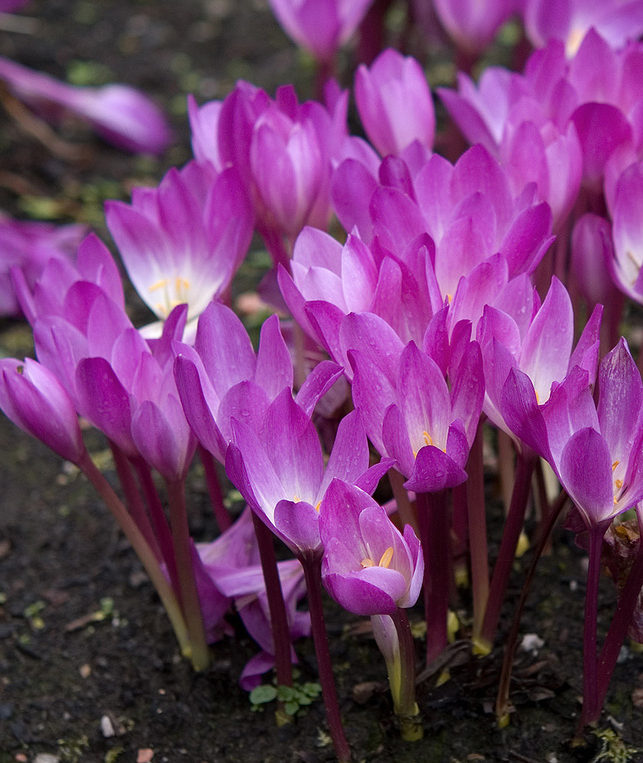Garden bindweed
Content:
Garden bindweed is a modest but cute looking ornamental plant that will gladly become a bright accent of your infield.
Perennial garden bindweed: photo
Fast-growing garden bindweed: description and varieties
Garden bindweed - This can be a herbaceous or shrub plant of the bindweed genus. Its stems love to twine around neighboring crops. At the moment, there are two hundred and fifty varieties of this plant.
Currently, I use all pair of bindweed species as a decorative decoration. Each species has a large number of varieties. They all require almost the same care. These two are:
- Tricolor small bindweed;
- Moorish Sabat bindweed. This plant can, like a carpet, grow in the form of a bush, or curl along a support.
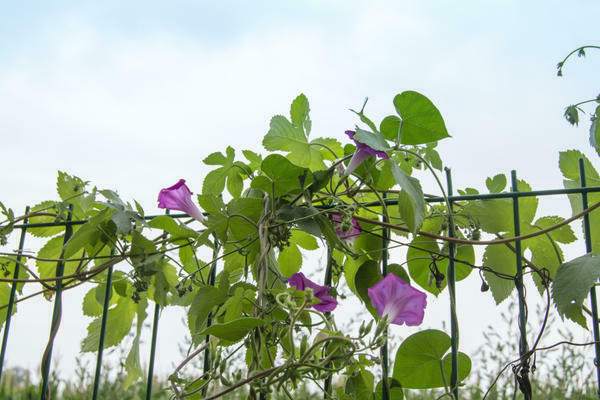
Perennial garden bindweed: photo
Garden bindweed: growing a flower
Flower Garden bindweed loves places well-lit by the sun's rays, if all of them are already occupied, but a light partial shade is quite suitable. However, in semi-shady places, flowering may suffer, it will not be so bright and extensive. This plant loves moisture, especially in hot weather, so it is necessary that the soil passes and retains moisture well. Also, the place should be protected from strong gusts of wind and cold drafts.
Preliminary preparation work
You can plant a garden bindweed flower either as seedlings or as seeds. The difference in these landings is only temporary. I plant the seeds later and they sprout well.
Garden bindweed: soil preparation
The garden bindweed prefers loose, well-drained soil, the acidity of which should be moderate. The most suitable option would be black earth soil. In the prepared hole for the plant, you need to add coarse sand and loosen it. Stir the mixture. Before planting itself, you need to add peat.
Stratification of Selected Garden Bindweed Seeds
It is necessary that the seeds of the garden bindweed lie in the water for about twenty-four to forty-eight hours. This will have a positive effect on their future germination. As soon as the seeds of the garden bindweed are swollen, they can be planted immediately.
How to sow garden bindweed seeds outdoors
After the seeds have been prepared and swollen, they can be planted. You must not forget to season the hole with peat just before planting. And also to purchase fertilizers, which include nitrogen elements, they will help the plant in development.
The right time
You need to plant at the end of the spring. You need to choose a warm, clear day.
The technical part of the landing
The grooves need to be made about two centimeters deep. A distance of five to seven sentiments must be kept between the seeds. After planting, sprinkle with soil and tamp lightly. You need to water it about a couple of times every seven days. If conditions are favorable, then seedlings will appear for seven days.
Garden bindweed in landscape design
Perennial bindweed is often used in landscape design. It is well suited for hedges, decorative beds and three-dimensional flower figurines.
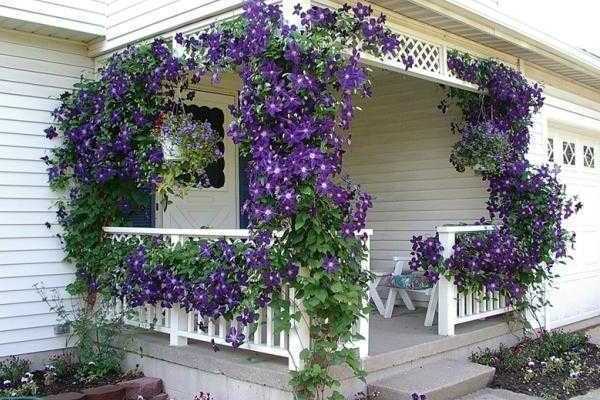
Perennial garden bindweed: photo
It is also planted to shade other crops, or they can divide the site into parts. They can also decorate various buildings, worries and sheds.
Garden bindweed: care secrets
At first, caring for the Garden Bindweed may seem daunting, but this is only the first time. When the bindweed gets stronger, it will require less attention.
Covering landings
Immediately after planting Garden Bindweed seeds, cover them with something to avoid sudden temperature changes. It can also help control weeds and serve as a mulch layer. You can dismantle the shelter as soon as the threat of temperature change disappears.
Garden bindweed: requirements for watering, weeding and loosening
It is required to weed the soil around the plant as weeds appear. But if the soil is mulched, then there may be no weeds at all. You also need to monitor the seedlings themselves. It is better to remove painful and weak seedlings, and plant strong plants twenty to thirty centimeters apart. Watering should be done as the soil dries up. If the bindweed does not have enough moisture, then it can begin to shed its formed buds. It is necessary to loosen the soil about once a week, this is done so that too much moisture does not evaporate.
How to mulch properly
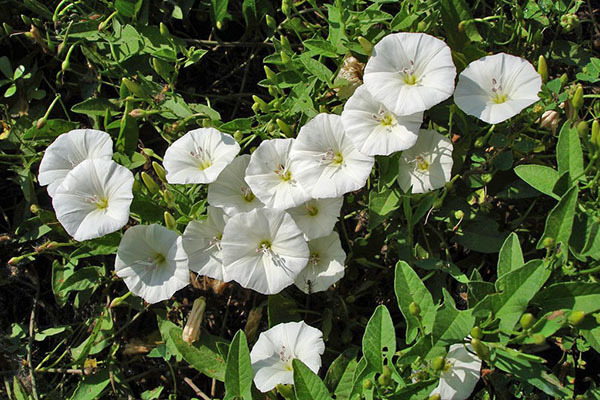
Photo of perennial Garden bindweed
For the first time, any covering agent is perfect. As soon as the culture grows up and gets stronger, then it can be mulched with peat. The layer should be one centimeter thick. Peat mulching will reduce the appearance of weeds, help in regulating temperature and water conditions, and will also enhance the activity of microbiological elements. For this process, it is better to use low-acid, already rotted peat with fifty percent moisture.
How to fertilize and fertilize
For perennial Garden Bindweed, liquid fertilizers are most suitable. At first, fertilizers that include nitrogen elements will be good. As soon as the plant blooms, then you need to make universal complex mineral fertilizers. This should be done about once every thirty days. But it is important not to overdo it, otherwise the bindweed will actively grow, and not bloom.
Conclusion
The fast-growing garden bindweed is an unpretentious, but beautiful plant that will not make you work hard. However, it will be a decorative element of your garden.


